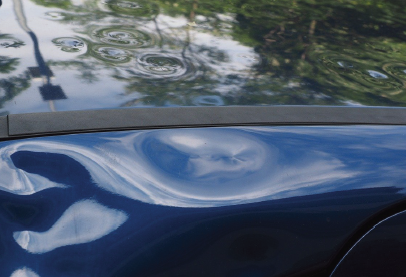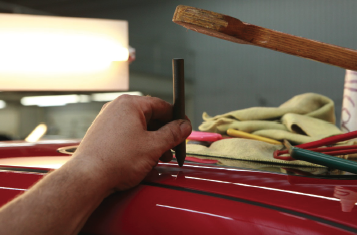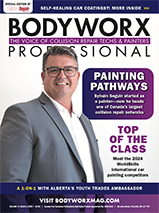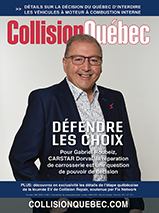HIGH DEMAND DO’S AND DON’TS
THIRD-PARTY AND IN-HOUSE PDR SERVICES USHER CLIENTS THROUGH THE DOOR. WHICH STRATEGY IS BETTER?
By Ros Macdonald
Once considered a sort of “wild west” of auto repair, the PDR (paintless dent repair) sector has been rapidly evolving from an experimental trade to a mainstay in collision repair facilities. Now, service providers must navigate an increasing demand for this still-developing sector of the industry. Collision repair facilities face the dilemma of whether to train in-house PDR technicians or to work with a third-party subcontracted PDR provider.
Few trades have undergone a transition as interesting as the PDR sector’s swift rise throughout the past three decades. Beginning as an underrepresented but innovative technique to mend car dents, PDR technicians have worked hard to shake off the trade’s reputation as an underdog in auto repair. An initial lack of available tools, an experimental workflow, and a lack of familiarity set the trade on a difficult but rewarding road to success.
“We had to prove ourselves,” PDR Canada President Domenic Serra says of how he and his crew began. “If we got a job from a dealership or a used car lot, we would repair a car for free just to show them what we could do. We slowly started making headway”. To put it bluntly, “I did this trade scared until I did it skilled.”
However, the benefits of PDR quickly began to outweigh its initial risks. The process became increasingly rapid, efficient, and eco-friendly. Not to mention, it allowed technicians to preserve the car’s original paint job. “The PDR techniques and tools today are phenomenal. We’re able to fix very complex dents, glue pull deeper dents, and fix large oil-can dents with all of the improvements over the last decade,” asserts Director of Hail Specialist Canada, Ricky Chin. His Calgary company was founded in 2009 and has established temporary repair centres across the Prairies and into Ontario that can perform up to 200 repairs a week at peak capacity.
Repair facilities offering PDR are also able to tap into an additional market— damage from weather-related issues and small dents unrelated to collisions. “They can offer discounts on dent repair while having collision repair done. Most vehicles have door dents on them, it is more convenient
for clients to have the dents fixed while their vehicles are in the bodyshop than to bring their vehicles in just to get some small dents fixed,” says Hail Specialist’s Ricky Chin.
The increasing significance of the PDR sector has given rise to some debate as to whether collision repair facilities ought to work with external PDR providers or develop their own PDR department. The trade has become so prominent that it is now being taught in mainstream collision repair training programs, making it easy to include PDR in a facility’s repertoire. On the other hand, the training tends to stick to the most basic techniques of this complex and constantly evolving craft, raising the question of whether it’s better to leave this service to the experts. “Your best option is to partner with a reputable PDR company that has a strong mix of work and a large team of technicians,” says Bing Wong of Canadian Hail Repair. “If you train your own staff they will leave as soon as your work dries up or as soon as there is a major hail storm.”
Developing a subcontracted relationship with a PDR company also incentivizes the PDR technicians to do their best work, so they can turn collision repair facilities into returning clients. Devon Fenton of DCC Hail points out, “Just like good bodyshops, established and reputable PDR vendors don’t massively discount their work but will provide better repairs leading to repeat clients.” Additionally, PDR companies can bring new clients through the door, who are receiving PDR through insurance companies’ Direct Repair Programs. “In fact, I have started to see some of our collision partners advertising the fact that they offer PDR services for hail damage,” says Serra. “They know it is what drivers are looking for.”
“PDR is a real game-changer. Working with PDR firms can bring in business to collision facilities, improve cycle times, and improve a business’s relationship with customers and auto insurers,” says Domenic Serra. “It is a win-win-win.” And the benefits offered by the PDR sector don’t stop here. The industry is venturing into glue pull repair, a process for heavy-duty collision repair that is less invasive and less time-consuming than some of the conventional methods. Whether bringing the services in-house or partnering with a PDR firm, one thing is clear—paintless dent repair has established itself as a cornerstone of the industry.
























